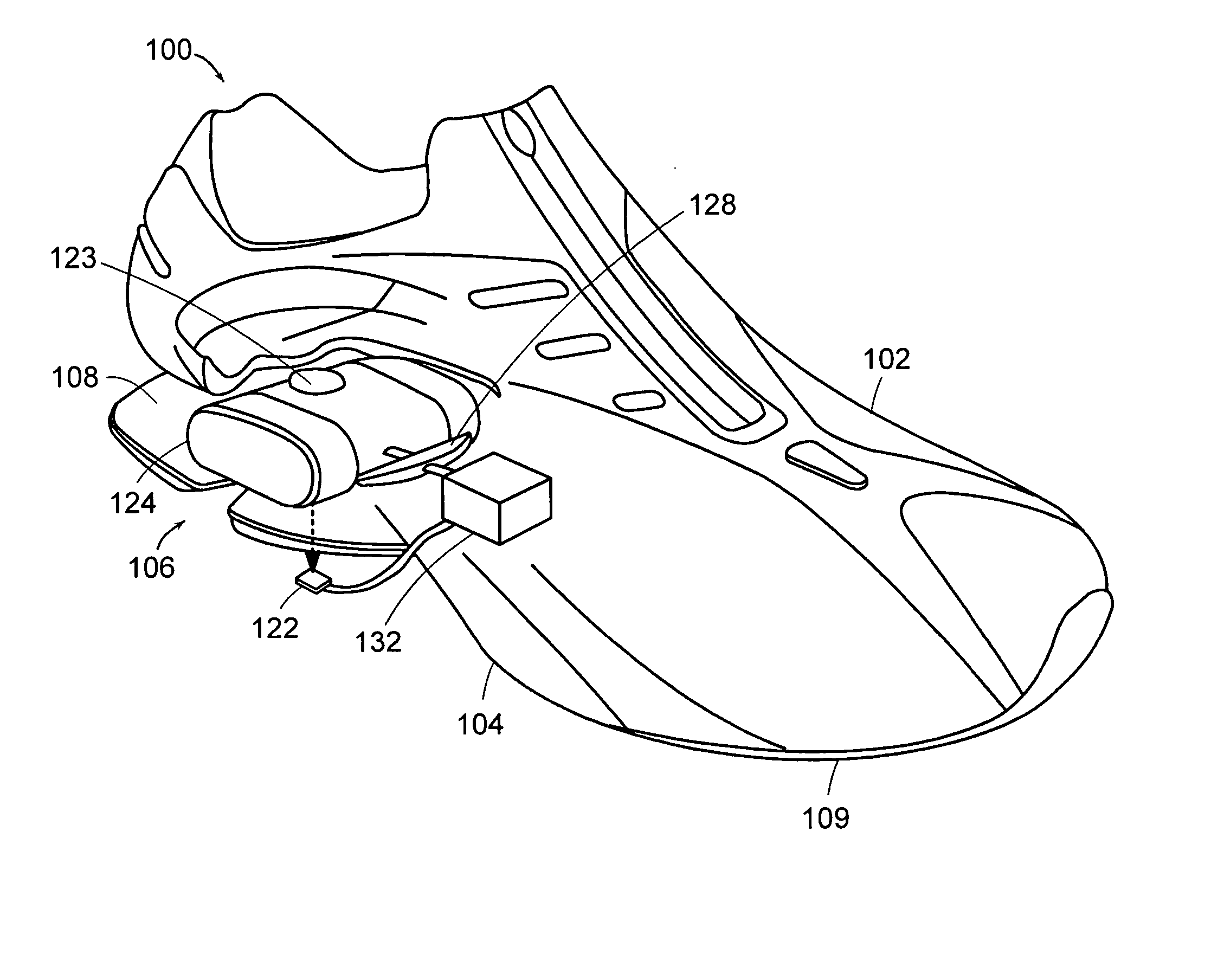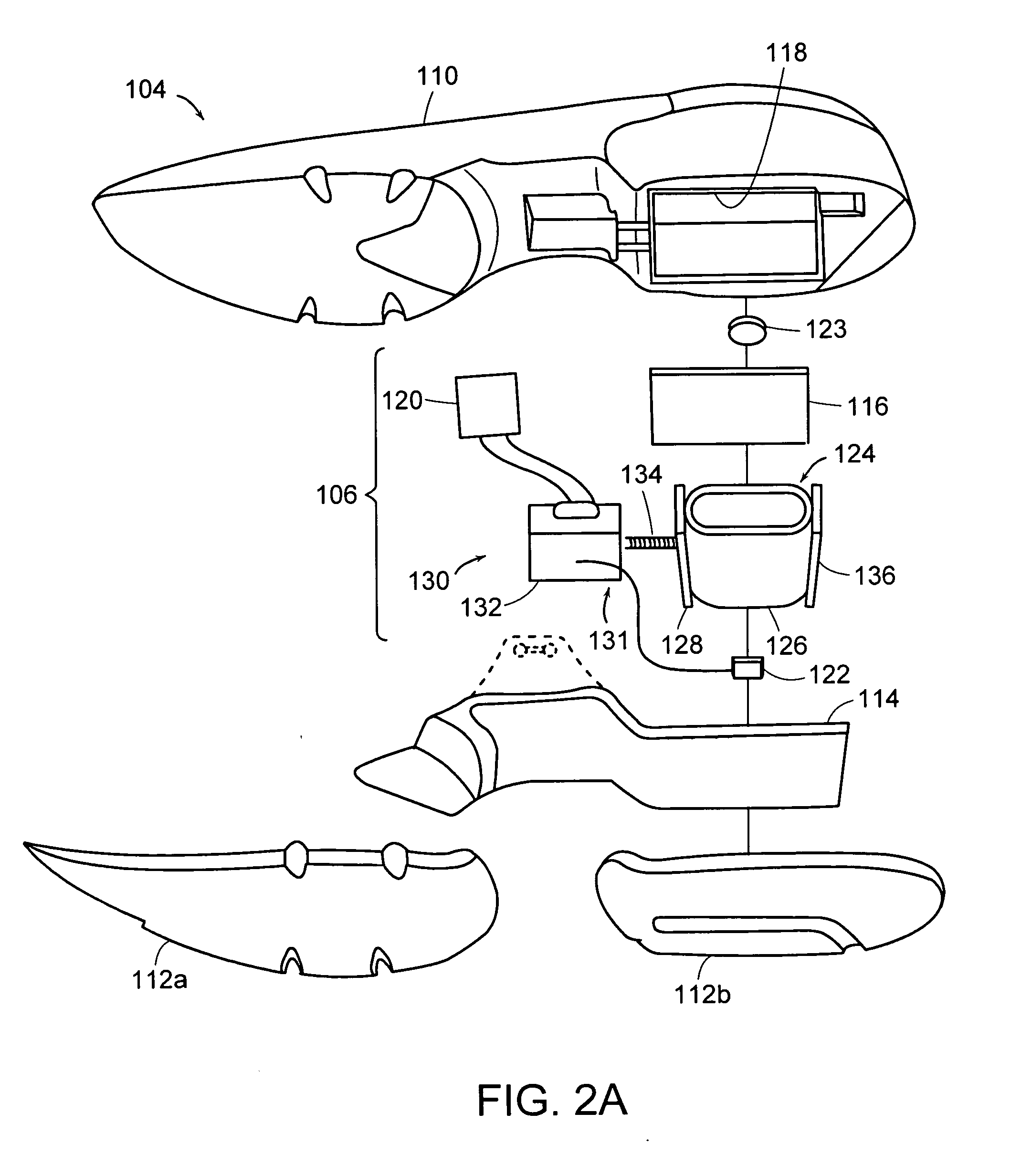Intelligent footwear systems
a technology of intelligent footwear and footwear, applied in the field of intelligent footwear systems, can solve the problems of ineffective cushioning system, inability to adjust performance characteristics, and inability to provide small-scale changes in the degree of cushioning provided, and achieve the effect of reducing the overall height of the sol
- Summary
- Abstract
- Description
- Claims
- Application Information
AI Technical Summary
Benefits of technology
Problems solved by technology
Method used
Image
Examples
Embodiment Construction
[0096] Embodiments of the present invention are described below. It is, however, expressly noted that the present invention is not limited to these embodiments, but rather the intention is that modifications that are apparent to the person skilled in the art are also included. In particular, the present invention is not intended to be limited to any particular performance characteristic or sensor type or arrangement. Further, only a left or right shoe is depicted in any given figure; however, it is to be understood that the left and right shoes are typically mirror images of each other and the description applies to both left and right shoes. In certain activities that require different left and right shoe configurations or performance characteristics, the shoes need not be mirror images of each other.
[0097]FIG. 1 depicts an article of footwear 100 including an upper 102, a sole 104, and an intelligent system 106. The intelligent system 106 is laterally disposed in a rearfoot porti...
PUM
 Login to View More
Login to View More Abstract
Description
Claims
Application Information
 Login to View More
Login to View More - R&D
- Intellectual Property
- Life Sciences
- Materials
- Tech Scout
- Unparalleled Data Quality
- Higher Quality Content
- 60% Fewer Hallucinations
Browse by: Latest US Patents, China's latest patents, Technical Efficacy Thesaurus, Application Domain, Technology Topic, Popular Technical Reports.
© 2025 PatSnap. All rights reserved.Legal|Privacy policy|Modern Slavery Act Transparency Statement|Sitemap|About US| Contact US: help@patsnap.com



